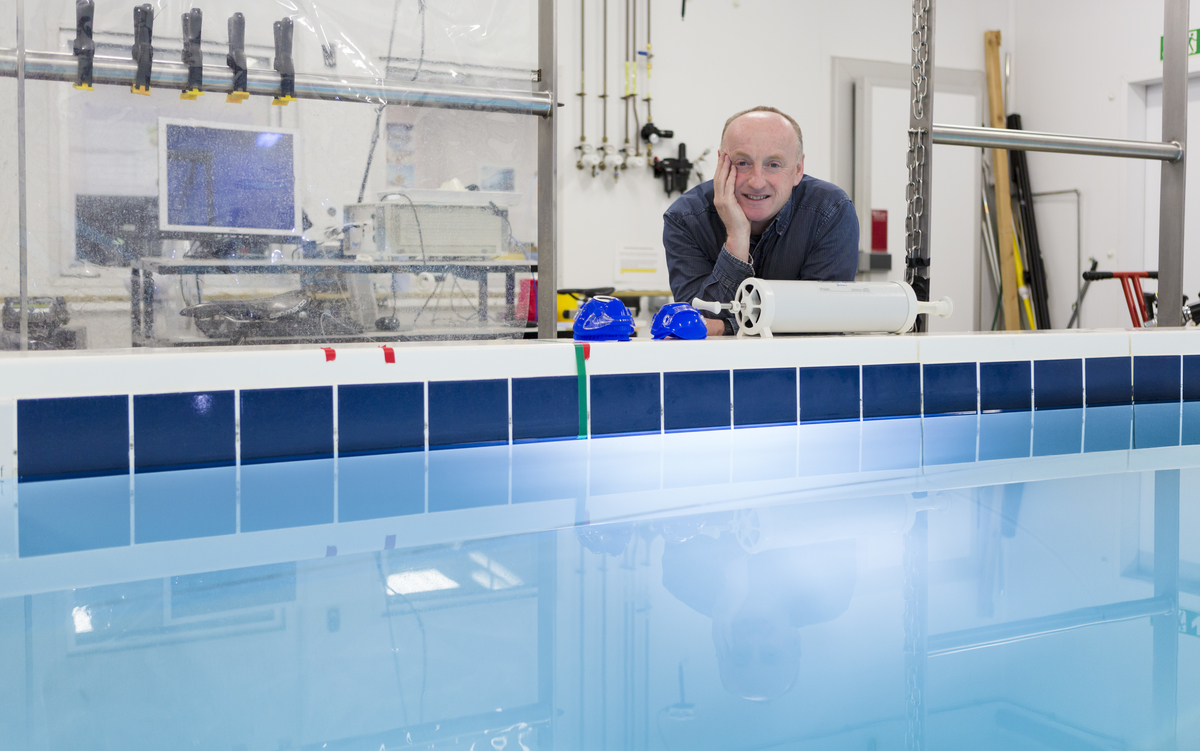Cold-water immersion expert Mike Tipton talks about the risks of cold-water dipping
A plunge into icy water is renowned for providing an invigorating experience, right after the first try for some.
However, is it really all wonders and no risks? Are there any dangers associated with it if not done correctly? Mike Tipton, professor of Human and Applied Physiology at the University of Portsmouth, tackles some of these common doubts and offers essential advice for a safe cold-dipping adventure.
The truth is, there could be a fatal mishap if the risks of cold water are taken lightly while dipping. According to Mike, who has researched the physical and psychological responses to cold-water immersion for four decades, it’s both ineffectual and dangerous to stay in freezing-cold water for more than 10 minutes.
Cold shock
The body’s first response to cold water is called ‘cold shock’. This is a combination of the body’s reactions, including rapid cooling of the skin, increased heart rate and a sudden gasp for breath. The cold shock response is at its peak between temperatures of 10-15C.
“The big mistake people make is that they think the colder the water they go in and the longer they stay, the better. This is completely wrong,” Mike says. “If a cold shock response is the one that’s prompting some of these beneficial changes, then you don’t need to go into the water for more than one or two minutes,” adds the expert.
If you are in temperatures below 10C, or staying in longer than eight minutes, there are a host of conditions which can grip you.
The big mistake people make is that they think the colder the water they go in and the longer they stay, the better
Mike Tipton
“Most cold-water swimmers or cold-water therapy enthusiasts have heard of cold injury or frostbite but not non-freezing cold injury,” Mike said. “It is a condition when your extremities cool to a point where they don’t freeze, but they become red, swollen and painful,” he says.
The soft tissues, nerves and blood vessels of your hands and feet can become damaged in temperatures below five degrees due to lack of adequate blood flow. “The major determinant of the temperature of a hand or a foot is the blood flow to it. As soon as you’re going into water, your body shuts off the blood flow. Essentially, it is sacrificing the extremities because it would rather have cold fingers than a cold heart,” Mike explains.
The condition can persist life-long in some cases. Your extremities are sensitive and susceptible to being cold, so protecting them while cold-water dipping is vital.
Is this the very same reason that wearing hats while indulging in cold-water therapy is a growing trend? Not quite. This is more of a personal choice than a medical recommendation. “The head does not lose blood flow to the same extent as our hands and feet. It’s a matter of losing heat through your head while getting exposed to the cold,” says Mike.
Rewarming comes first
After-drop is another condition that is widely misunderstood. This refers to when your core body temperature continues to fall after being in cold water even when out of it. Afterdrop is not due to a change in blood flow. It happens because it takes time for the drop in body temperature that happens when in the water to be reversed.
“People are misinformed about it. They read up on things to do and not to do, to avoid dying of an after-drop, which is not the case. It’s impossible for anyone to catch hypothermia in less than 30 minutes, even in the coldest water, due to the body’s size and the time it takes for cold to reach the core,” Mike explains.
Properly warming up after cold-water therapy is crucial. We often think that a warm bath after an icy dip is heavenly. Mike thinks it’s glorious too, unless you do it to a hypothermic person. “A hot bath suppresses your shivering and makes you feel warm immediately. It also reduces the stress on the body. It’s just not the way to rewarm somebody who is semi-conscious and has been profoundly hypothermic,” he says.
Mike and his team are currently studying the effects of cold-water immersion on driving. Often he has spotted people attending cold-water swimming sessions and then taking the wheel 10 minutes later. “This might impact their mobility, strength, or the ability to do things like driving,” Mike warned. “Studies are ongoing regarding this. I think people who run these kinds of events have the responsibility to make sure that people are properly rewarmed before they start leaving,” he said.
Key pointers to follow
The 2022 research paper titled Cold Water Therapies: Minimising Risks, published in the British Journal of Sports Medicine authored by Mike and his team, details what cold-water participants and event organisers can do. His one golden piece of advice, a medical check-up prior to a cold plunge, tops the list. Some of the others are:
- Enter the water gradually, and wait for the initial response to pass by before swimming or face immersion
- Avoid prolonged breath holds
- Follow an incremental approach and gradually habituate to the cold
- Limit exposure to 10 minutes
- Wear warm clothing and windproof outer layers after coming out
Keep these pointers in mind for your next dip. Tune into the Plunge podcast to hear more from Mike about the science behind cold-water therapy.
Prioritising safety and being aware of any potential dangers ensures a worry-free and enjoyable experience. Here’s to safe and happy cold-plunging!

